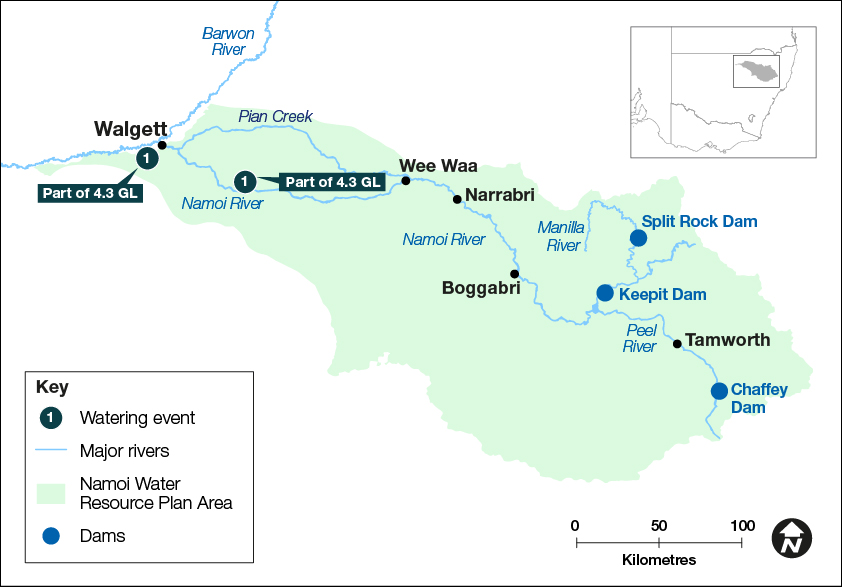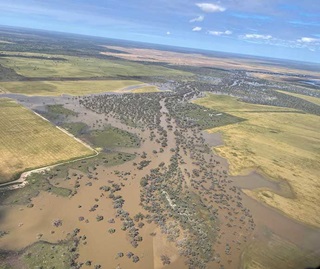Natural rainfall and dam spills achieved a range of ecological outcomes in the Namoi system in 2022–23.
Key outcomes
Continuation of natural flooding, rainfall, tributary inflows and daily operational dam water releases met environmental demands in the Namoi system in 2022–23. Environmental water managers adopted a ‘watching brief’ to identify whether intervention with environmental flows would be required.
The objective of flow management was to:
- inundate floodplain and anabranch wetlands downstream of Keepit Dam to Walgett
- allow unrestricted fish passage along the Namoi and Peel rivers
- support recruitment and movement of golden perch and other flow-specialist native fish
- provide connectivity between the Peel, Namoi and Barwon rivers.

Catchment conditions
During 2022–23, the Peel–Namoi catchment continued to experience very wet conditions driven by a well-developed La Niña event. This resulted in large-scale flooding and generally cool summer temperatures.
Keepit, Split Rock and Chaffey dams remained at 100% storage capacity for the majority of the year. All 3 storages spilled water throughout the year, providing warmer ambient water temperatures and mirrored natural rises and falls in river heights downstream of each storage.
General security allocations reached 200% in the Lower Namoi, and 100% in the Manilla and Peel, as well as 100% allocation in the Chaffey Environmental Water Allowance.
These changing circumstances heavily influenced the watering approach and outcomes sought. Environmental water managers adapted their watering plans in response to catchment conditions and changing environmental needs.
About the catchment
The Namoi catchment is in northern NSW and covers an area of 42,000 square kilometres. Located in a temperate climate zone, rainfall typically occurs in summer. The major regulated rivers are the Namoi and Peel, with major water storages at Keepit, Split Rock and Chaffey dams. The Namoi River flows into the Barwon River at Walgett.
The lower Namoi catchment is a highly modified landscape. Remnant wetlands are present along the floodplain anabranches downstream of Narrabri, known locally as warrambools. These provide important habitat for waterbirds and nursery areas for native fish.
The Namoi and Peel rivers support native fish including Murray cod, silver perch and freshwater catfish.
The Namoi River between Gunnedah and Narrabri provides important habitat for critically endangered silver perch. Lake Goran, in the unregulated Mooki catchment, is listed as a wetland of national significance, and provides habitat for waterbirds when inundated.
The Namoi River is the second largest contributor of flow into the Barwon River, providing an important source of water and opportunities for the movement and survival of native fish.
Water for Country
The Namoi is Country to the Gomeroi/Kamilaroi Aboriginal peoples.
Water for Country is environmental water use planned by the Department of Planning and Environment and Aboriginal people to achieve shared benefits for the environment and cultural places, values and/ or interests.




